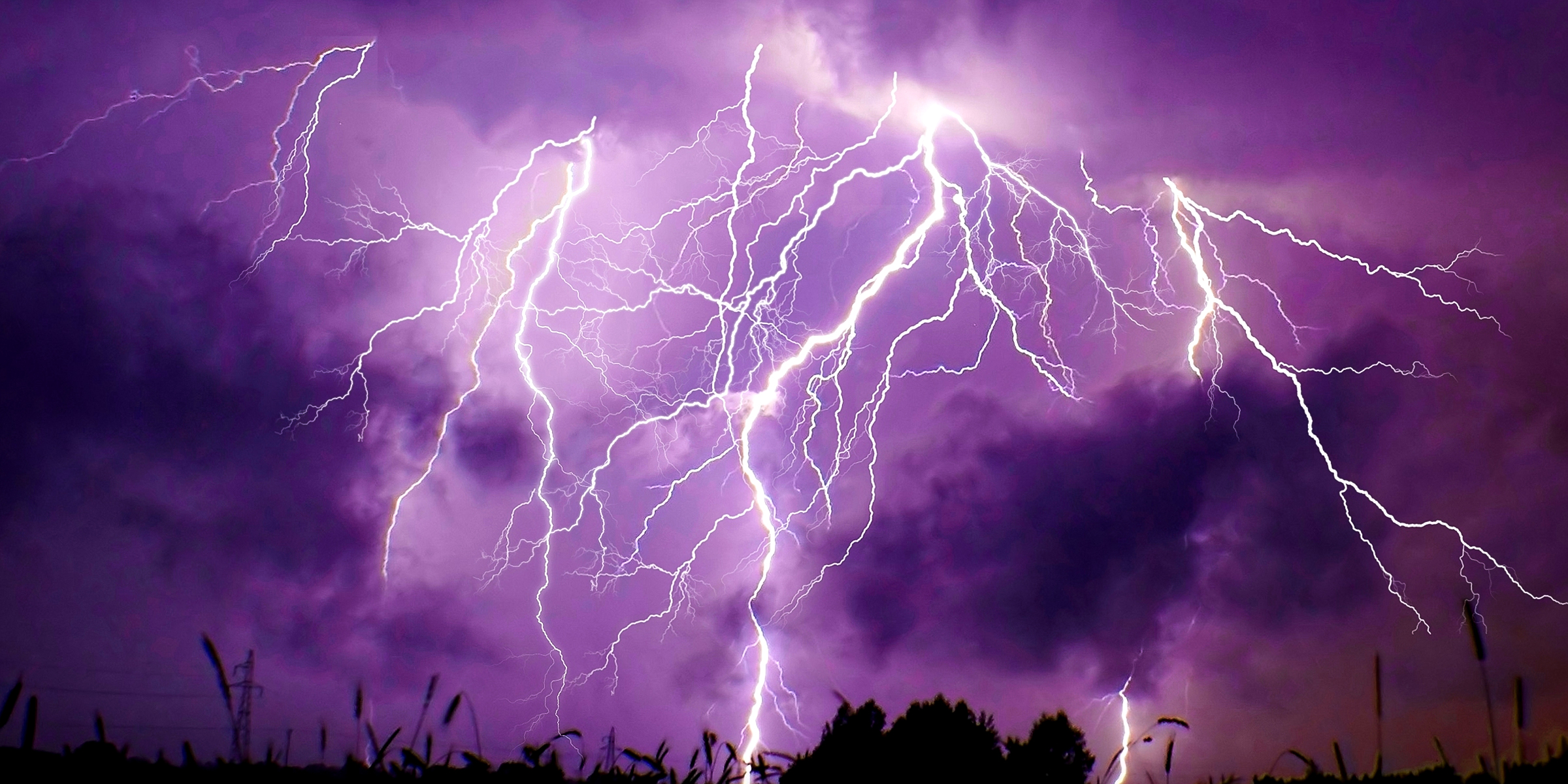
4 Interesting Facts about Thunderstorms That Will Spark Your Curiosity
Thunderstorms offer a glimpse into the dynamic dance of energy and elements within our atmosphere, showcasing nature's might through the spectacular display of lightning and thunder. Here are interesting facts about thunderstorms!
Thunderstorms are natural events that can appear alone, in groups, or in lines. The most dangerous kinds are the ones that stay over one place for a long time, causing heavy rain that can last from half an hour to an hour.
These phenomena, far from being mere meteorological events, carry stories of ecological impact, scientific discovery, and cultural significance. Explore the heart of the storm and uncover interesting facts hidden within each flash and rumble.

A "wedding cake" supercell thunderstorm with lightning in Severy, Kansas. | Source: Shutterstock
Interesting Facts about Thunderstorms
1. Roughly 16 million thunderstorms take place on Earth annually.
An astounding 16 million thunderstorms dance across the globe annually, with approximately 100,000 unleashing their fury in the United States alone.
Remarkably, only about 10% of these storms reach the severity threshold defined by the National Weather Service, which includes winds exceeding 58 mph, hail measuring 3/4 inch or larger, or the spawning of tornadoes.

Multiple thunderstorms in the sky | Source: Shutterstock
2. Thunderstorms bring strong winds, hail, heavy rain, lightning, and tornadoes.
Thunderstorms are versatile in creating chaos, capable of unleashing a barrage of destructive forces including straight-line winds, often exceeding 50 mph on land, downbursts that mimic tornado-like devastation, lightning, hail, heavy rainfall, and even tornadoes.

Rainfall and storm clouds looming over the Mississippi | Source: Shutterstock
3. In the 1980s, NASA conducted flights through 1,496 thunderstorms with one airplane.
In the 1980s, NASA used aircraft N616NA, later named N816NA, to study thunderstorms. Over six years, it flew through 1,496 thunderstorms and endured 714 lightning strikes, contributing to NASA's Storm Hazards Program, which assessed lightning's impact on aircraft with composite materials and digital control systems. composite materials and digital control systems.

A slow supercell storm in Colorado | Source: Shutterstock
4. Thunderstorms begin when warm air rises along with moisture.
A thunderstorm forms when warm air and moisture rise, propelled upward by various lifting mechanisms. As the sun heats the Earth's surface, pockets of air ascend, carrying moisture upward. This upward movement sets off a series of events: cooling air releases heat, condenses, and creates clouds.
Nurtured by the storm's upward momentum, these clouds ascend into regions of freezing temperatures, giving birth to ice particles. These particles collide, electrify, and ultimately unleash the awe-inspiring spectacle of lightning and thunder.

Lightning above the White House in Washington, D.C. | Source: Shutterstock
Thunderstorms are like nature's grand symphony, mixing heat, moisture, and air movements into a stunning show of beauty and strength. Understanding these storms helps us appreciate Earth's wonders even more. Such exploration doesn't end here; it extends to the very ground beneath our feet.
Excited to uncover intriguing facts about geology? Delve into the captivating realm of rocks, minerals, and Earth's history, where every discovery is a journey into the fascinating depths of our planet!
